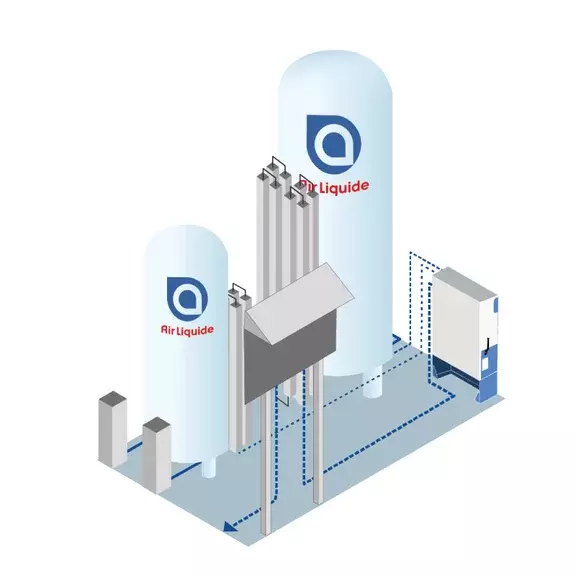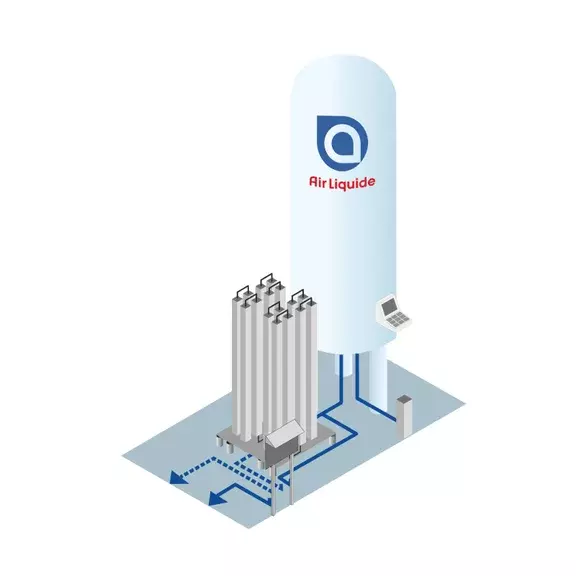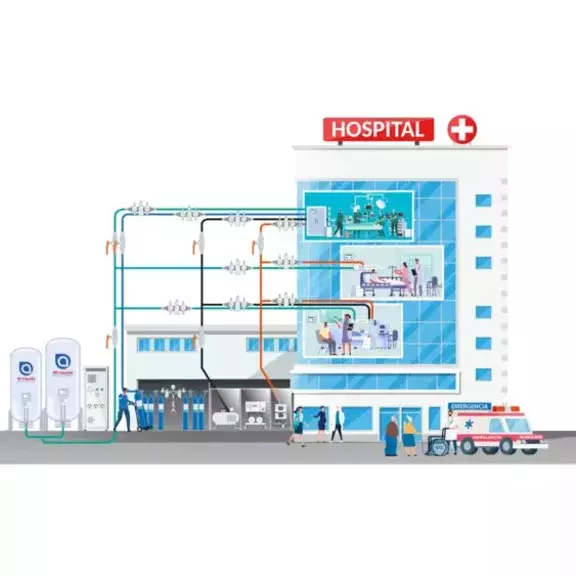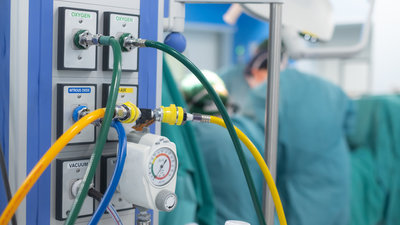O2 IN DEMAND
Resilient bulk oxygen supply systems for healthcare facilities
Published on July 28, 2022
5 minutes
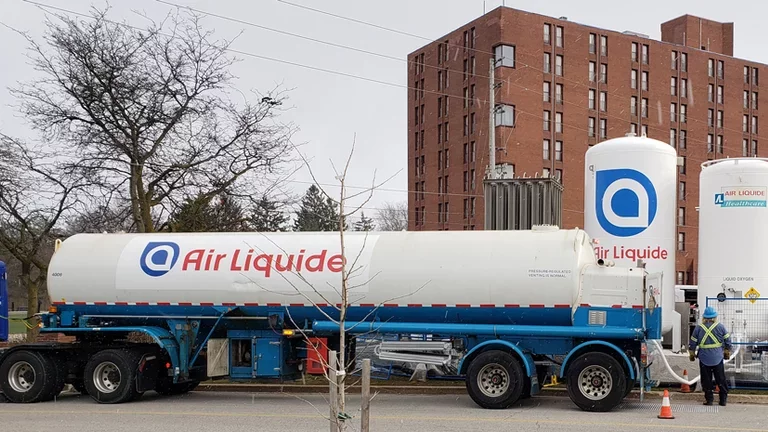
Over the past year, many discussions have centred on the critical supply of oxygen to healthcare facilities in light of the increased demand due to COVID-19. Can all the additional respiratory support equipment, such as ventilators and high flow therapy devices, be supported with existing hospital infrastructure?
As new facilities are planned and existing sites are renovated or expanded, project teams now look to resilient design principles to determine bulk oxygen supply systems and the piping infrastructure required to accommodate such demands.
The importance of resilient oxygen supply design
By definition, resilient systems offer flexibility to cover both immediate and long-term needs, including prolonged surges in demand. It takes careful planning to ensure oxygen systems operate reliably during times of average consumption and have the ability to ramp up quickly in case of a significant demand spike. It is critical to consider not only the size of the bulk oxygen equipment but also the diameter of the piping within the hospital walls and piping network to the bulk system pad.
The very nature of a bulk oxygen system incorporates many aspects of resilient design principles. Installed on a facility site, the day-to-day supply is inherently local. By building to the requirements of CSA Z7396.1, Medical Gas Pipeline Systems, the redundancy factor is also covered.
All healthcare bulk facilities have a large main tank with vapourizer (main subsystem) and either a reserve tank with vapourizer or a high-pressure cylinder backup (reserve sub-system) ready to assist or take over in the case of increased demand, flow interruption or failure of the main system. A control cabinet is the set of mechanical valves and regulators intended to automatically switch the supply of oxygen from the main subsystem to the reserve and back again if failure occurs, or to relieve excess head pressure in the tank instead of losing it to the atmosphere. In case of a more serious event that may impact the integrity of the infrastructure around the tank, hospitals are required to have an emergency oxygen inlet. This should be located away from the bulk installation and allow an emergency supply.
The principles of cryogenic bulk tank system operations are simple. Liquid oxygen is contained within a cryogenic vessel and flows to the vapourizer where the phase changes from liquid to gas and supplies the healthcare facility.
It is critical to maintain uninterrupted oxygen supply so there are no components in a bulk installation that require electricity to deliver oxygen. Even when there’s a total power outage, liquid oxygen still flows to the vapourizers, changes to a gaseous form and continues to the hospital pipeline. That plus robust design makes the system extremely reliable. Bulk oxygen systems very rarely require service outside of planned preventive maintenance.
Scalability of bulk oxygen supply systems
Scalability in some industries refers to the preplanned ability to add or subtract components, or quickly swap out different sized components. These methods are used to increase or decrease supply. Given the critical nature of medical oxygen, making changes to the bulk equipment or pipeline on the fly is impractical, so proper sizing instead of scalability should be considered in view of demand variability.
Resiliency includes the ability to meet changes in demand over time. Average and peak consumption rates should still be calculated as these will represent regular operating conditions. Next, the desired surge capacity must be determined. Clinical input during this step is important to estimate how many additional devices could be activated and what the corresponding flow rates would be. A ventilator could add between 20 and 75 litres per minute (LPM) to the flow demand. A high flow therapy unit could add up to 65 LPM.
Numerous hospitals have projected and, in some cases, experienced actual demand increases up to 20 times their historical average. This has required significant investment for the urgent upgrade of their bulk systems and pipelines. In other cases, hospitals have expanded with temporary facilities, which has required separate bulk oxygen supply systems as existing installations lack resilience to meet the extra demand.
Resilient design impacts the overall bulk installation, including the reserve subsystem. Equipment sizing was previously based on historical facility data plus calculated increased loads from expansion. During extended periods of peak/surge usage, traditional system autonomy would decrease. Resilient reserve subsystems should be sized in accordance with the facility’s anticipated highest level of demand.
COVID-19 increases demand of bulk oxygen equipment
The need for synergy between the bulk gas equipment and medical gas pipeline system is heightened during pandemic-type demands. The entire hospital piping network, including the supply piping from the bulk installation, must be able to support increased flow rates.
Pipe sizing has also been calculated in the past based on historical data and may even have been downsized to reduce construction budget. COVID-strained facilities have experienced reduced oxygen flow and/or pressure at the medical gas outlets in patient care areas served by smaller diameter piping. The further away these areas are from the source system (bulk installation), the more pronounced the issue becomes. Resilient piping design decreases pressure losses and enhances the ability to care for the most vulnerable patients.
Benefits of redundancy in a two system approach
Healthcare facilities have taken different approaches to their oxygen system design. Some hospitals have decided not to upgrade the entire pipeline but just the part that supplies critical wards like the intensive care unit. Others have opted to supply different parts of the pipeline from two bulk oxygen systems, which offers additional benefits. It increases redundancy — two complete systems instead of one, both capable of meeting the demand of the entire hospital. Two systems also mean two independent feeds to the hospital, so if the pipe from one system is damaged, the second remains intact. Upgrading the critical portion of the pipeline is also less expensive than updating the entire medical oxygen pipeline.
-
O2 in Demand - Air Liquide Healthcare Article CHF Spring 2021
Download the document PDF (145.39 KB)
